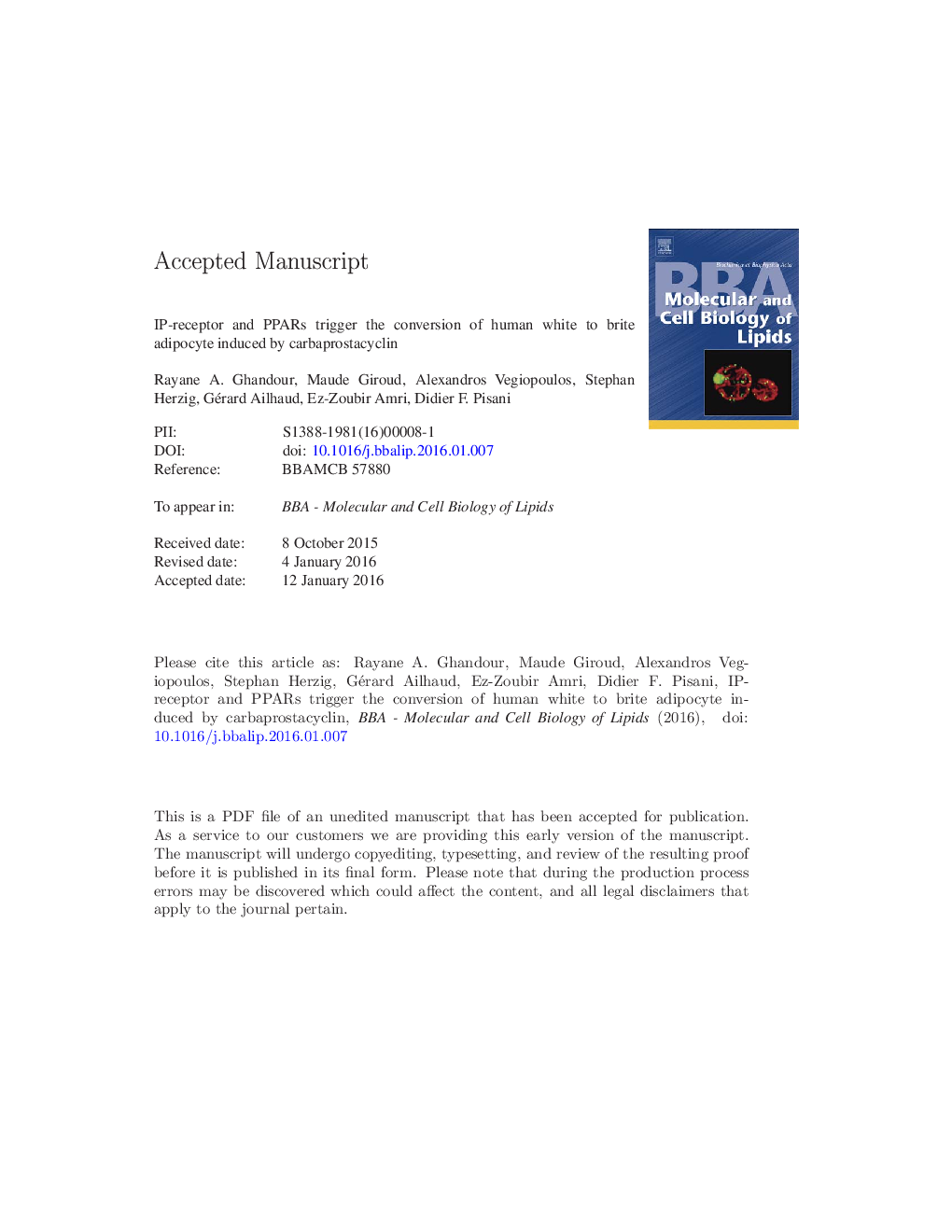| کد مقاله | کد نشریه | سال انتشار | مقاله انگلیسی | نسخه تمام متن |
|---|---|---|---|---|
| 8301755 | 1537707 | 2016 | 29 صفحه PDF | دانلود رایگان |
عنوان انگلیسی مقاله ISI
IP-receptor and PPARs trigger the conversion of human white to brite adipocyte induced by carbaprostacyclin
دانلود مقاله + سفارش ترجمه
دانلود مقاله ISI انگلیسی
رایگان برای ایرانیان
کلمات کلیدی
موضوعات مرتبط
علوم زیستی و بیوفناوری
بیوشیمی، ژنتیک و زیست شناسی مولکولی
زیست شیمی
پیش نمایش صفحه اول مقاله

چکیده انگلیسی
Brite adipocytes recently discovered in humans are of considerable importance in energy expenditure by converting energy excess into heat. This property could be useful in the treatment of obesity, and nutritional aspects are relevant to this important issue. Using hMADS cells as a human cell model which undergoes a white to a brite adipocyte conversion, we had shown previously that arachidonic acid, the major metabolite of the essential nutrient Ω6-linoleic acid, plays a major role in this process. Its metabolites PGE2 and PGF2 alpha inhibit this process via a calcium-dependent pathway, whereas in contrast carbaprostacyclin (cPGI2), a stable analog of prostacyclin, activates white to brite adipocyte conversion. Herein, we show that cPGI2 generates via its cognate cell-surface receptor IP-R, a cyclic AMP-signaling pathway involving PKA activity which in turn induces the expression of UCP1. In addition, cPGI2 activates the pathway of nuclear receptors of the PPAR family, i.e. PPARα and PPARγ, which act separately from IP-R to up-regulate the expression of key genes involved in the function of brite adipocytes. Thus dual pathways are playing in concert for the occurrence of a browning process of human white adipocytes. These results make prostacyclin analogs as a new class of interesting molecules to treat obesity and associated diseases.
ناشر
Database: Elsevier - ScienceDirect (ساینس دایرکت)
Journal: Biochimica et Biophysica Acta (BBA) - Molecular and Cell Biology of Lipids - Volume 1861, Issue 4, April 2016, Pages 285-293
Journal: Biochimica et Biophysica Acta (BBA) - Molecular and Cell Biology of Lipids - Volume 1861, Issue 4, April 2016, Pages 285-293
نویسندگان
Rayane A. Ghandour, Maude Giroud, Alexandros Vegiopoulos, Stephan Herzig, Gérard Ailhaud, Ez-Zoubir Amri, Didier F. Pisani,